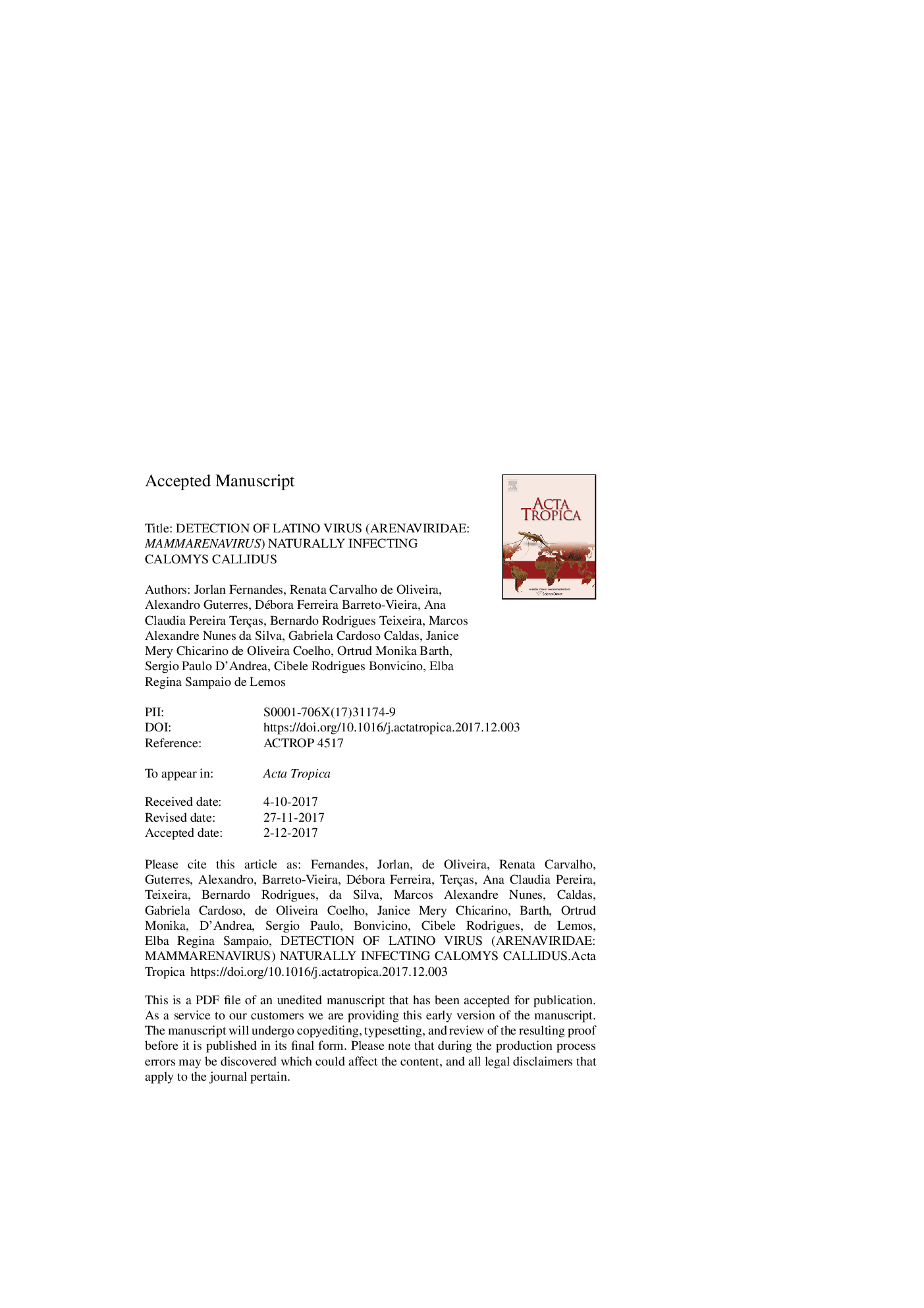| Article ID | Journal | Published Year | Pages | File Type |
|---|---|---|---|---|
| 8744398 | Acta Tropica | 2018 | 23 Pages |
Abstract
Mammarenavirus species are associated with a specific rodent host species, although an increasing number of virus has been associated to more than one host, suggesting that co-evolution is less robust than initially thought. There are few eco-epidemiological studies of South America mammarenaviruses in non-endemic areas of Arenavirus Hemorrhagic Fever, affecting specially our current knowledge about animal reservoirs and virus range and host-virus relations. In Brazil, seven arenavirus species were described in seven different rodent species. Here in we describe a new rodent reservoir species in Brazil related to the previously described Latino mammarenavirus (LATV) MARU strain. Samples of 148 rodents from Mato Grosso state, Brazil were analyzed. Amplification of the glycoprotein precursor gene (GPC) was observed in six Calomys callidus rodents. According to phylogenetic inferences, is observed a well-supported monophyletic clade of LATV from C. callidus and other Clade C mammarenavirus. In addition, the phylogenetic relations of both genes showed a close relation between LATV MARU and Capão Seco strains, two distinct lineages. Additionally, the results obtained in this study point out to a change of scenario and in previously stabilized patterns in the dynamics of South American mammarenaviruses, showing that with more studies in AHF non-endemic or silent areas, more potential hosts for this virus will be discovered.
Keywords
Related Topics
Life Sciences
Immunology and Microbiology
Parasitology
Authors
Jorlan Fernandes, Renata Carvalho de Oliveira, Alexandro Guterres, Débora Ferreira Barreto-Vieira, Ana Claudia Pereira Terças, Bernardo Rodrigues Teixeira, Marcos Alexandre Nunes da Silva, Gabriela Cardoso Caldas,
